Table of Contents
Almost everyone perceives the German Shepherd as a dog with a black and tan coat, a friendly look, and a police badge on its collar. And yet the types of German Shepherds are diverse and are divided into categories according to coat type, color, and even breed line. In addition, not all Germans are characterized by good-natured and exemplary behavior, so when choosing a pet, you should carefully examine its pedigree.
German Shepherd Types By Hair Length
According to the type of hair, there are two types of German Shepherd Dogs: short-haired (smooth-haired) and long-haired.
Short-haired GSDs have dense, hard fur, with undercoats adhering tightly to the body. The coat on the tail, neck, and hind legs is softer and longer than on the rest of the body.
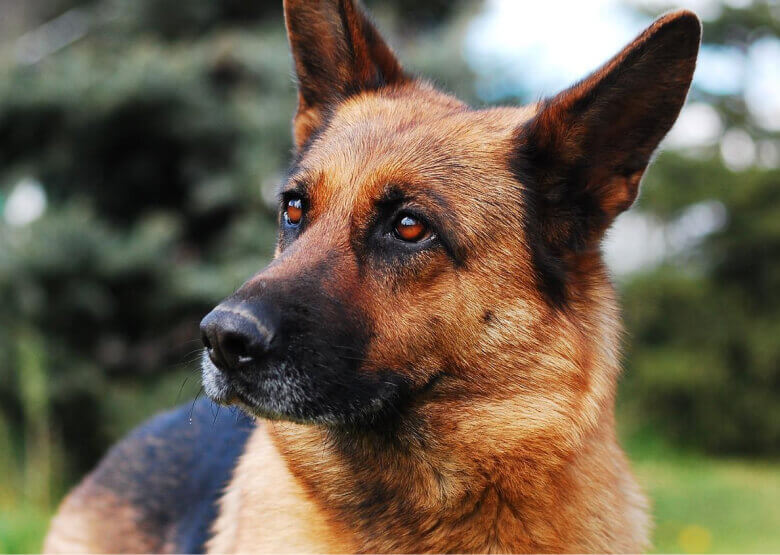
Long-haired Shepherds differ from their short-haired counterparts in the length and structure of their fur. The dogs have a long, soft, slightly wavy coat with a weak undercoat. On the chest, neck, and tail the fur is particularly long and fluffy. At the base of the ears and on the back of the paws, so-called fleece forms from tufts of hair, giving the animal a playful and perky look.
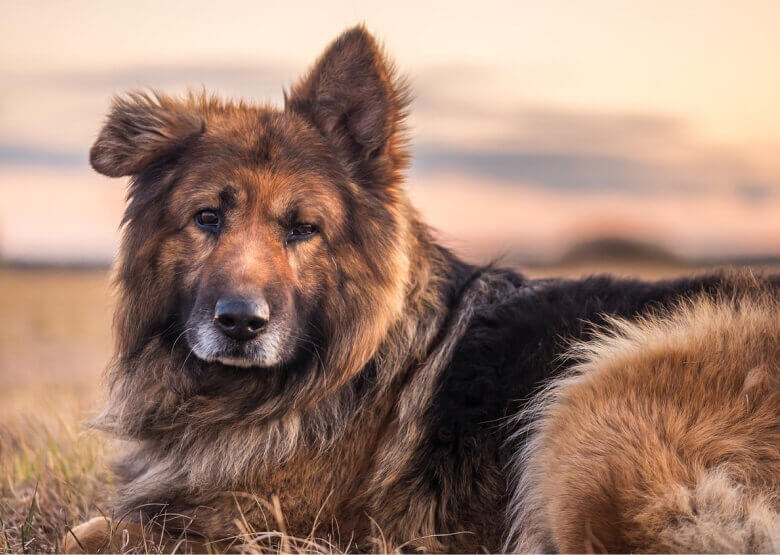
German Shepherd Types By Coat Colors
Most people believe that a purebred German Shepherd puppy can only have a gray or black and tan coat color. And this is the most common misconception because purebred Germans have a variety of colors and a combination of different shades.
To be fair, it should be noted that some colors are considered a deviation from the standards. And dogs with all white or blue color, though they look very extravagant, are not allowed for breeding or participation in shows.
Generally Accepted Colors of German Shepherds
Black and Tan. A combination of black and tan, this is the classic and most common coloring in the representatives of the German Shepherd breed. On the upper part of the animal’s body, there is a distinctive black spot in the shape of the letter V, affecting the line of the back, sides, and top of the tail. The paws, chest, belly, and neck of the Shepherd dog are colored in a light tones: red, yellow-gold, or light chocolate.
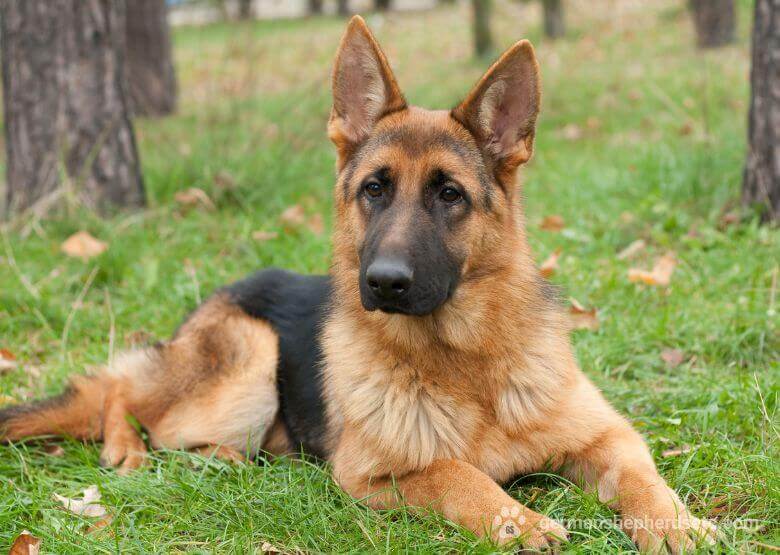
Sable. A rare type of color, which is also called wolf color or agouti. It is characterized by various shades of gray, with alternating light and dark areas.
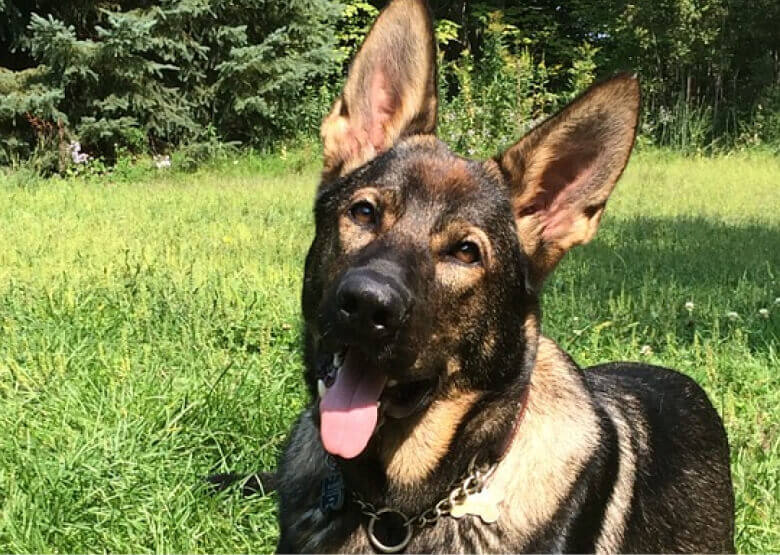
Black. Shepherds that have a monochromatic black coat with a glossy sheen are extraordinarily beautiful and very rare.
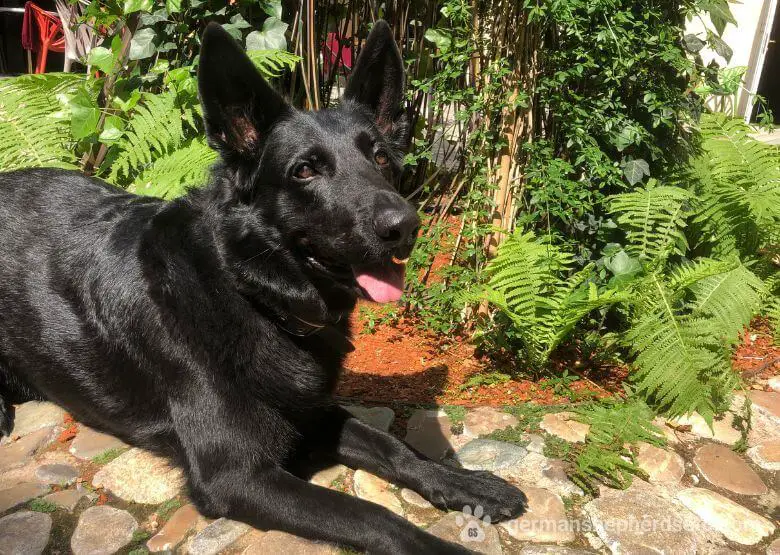
Variants of Non-Standard Colors
White. Shepherds have a snow-white coat without a single colored spot. They are not albinos, as many people think, because dogs have black eyes, nose lobes, and paw pads.
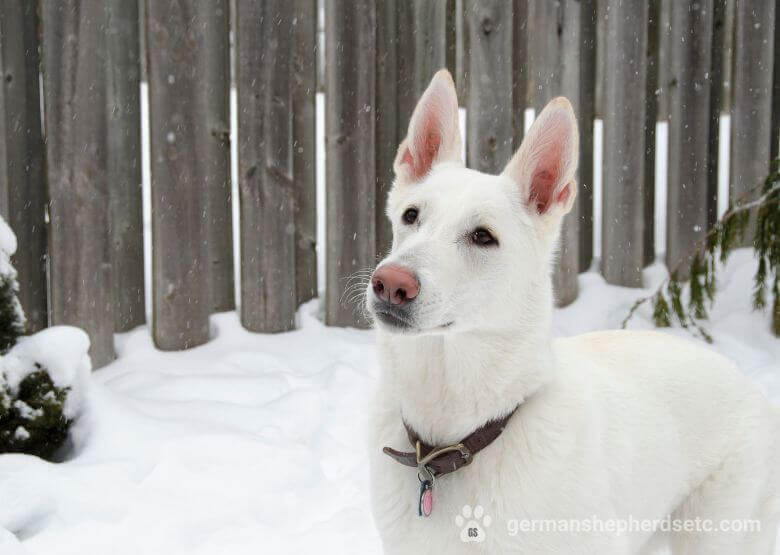
Red. An unusually rare color variant in the German breed, represented by a rich reddish-red color.
Golden-yellow. Shepherds with non-standard light yellow fur, casting a golden shine, have no less original look,
Blue. Dogs have a very interesting smoky gray coloration with a blue shimmer. What is interesting, the original color of fur in such Shepherds was black or dark gray, and the effect of a bluish cast is created as a result of the paling of the main shade.
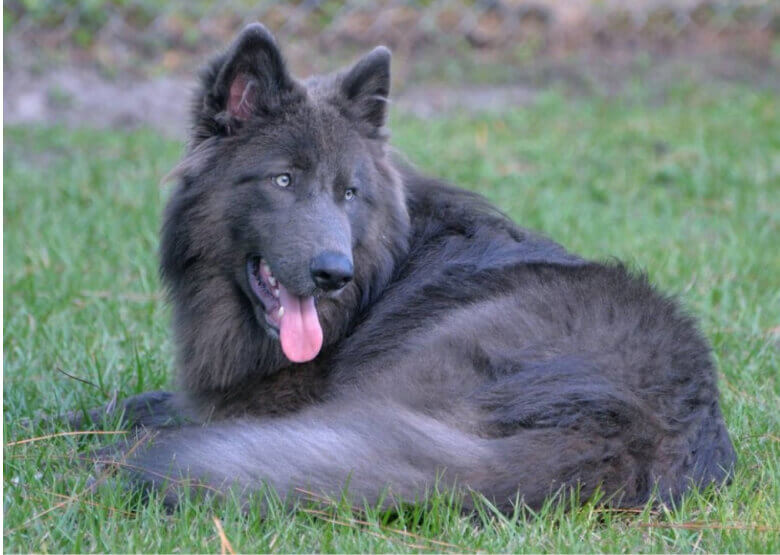
German Shepherd Types by Breeding Lines
The Chinese call them Kunming, in Holland, they are known as Saarloos Wolfhound, the Americans have nicknamed them Shiloh Shepherd, and in Great Britain, they are nicknamed Utonagan. And these are not the names of fairy tale characters or mythical creatures. All of these unusual names belong to types of German Shepherd breeds.
After all, the popularity of these amazing, extraordinary animals, led to the fact that many countries wanted to have “their own” German Shepherd. Breeders for many years were engaged in interbreeding the German Shepherds with representatives of other breeds, and even wolves.
As a result, types of GSDs, registered as American, Chinese, British, or Czech lines of the breed, have appeared. There are also quite a few hybrid lines that are not recognized by the International Canine Federation.
Shepherds with German Breeding Lines
West German Shepherds (Show Line)
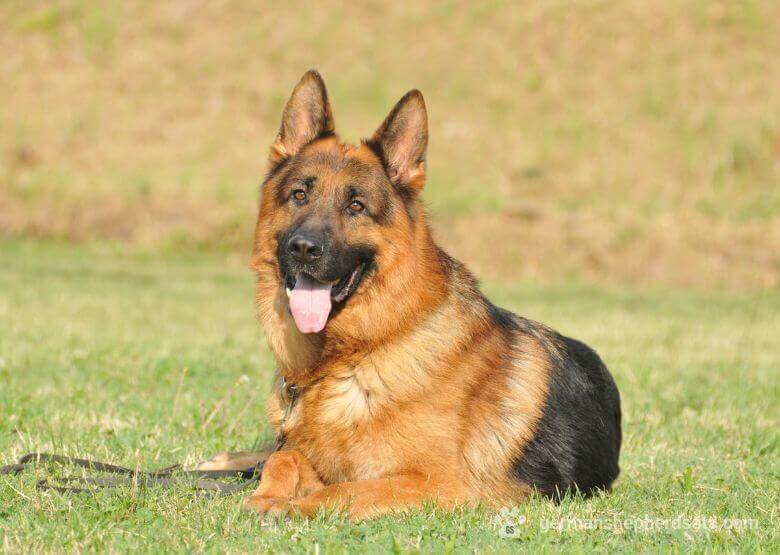
This is a category of purebred German Shepherds, whose appearance is as close to the generally accepted standards as possible. These are graceful dogs with long legs and luxurious fur, mostly of sable or black and tan color.
The purpose of show line German Shepherds is participation in exhibitions and competitions, but not service activity. And in their breeding, breeders have focused on preserving the external aspect of dogs, not caring about the development of working qualities. Therefore, the nature of show dogs has flaws: Shepherds are rather unbalanced and emotional, showing excessive aggression or cowardice, especially in stressful situations.
Working German Shepherds Line
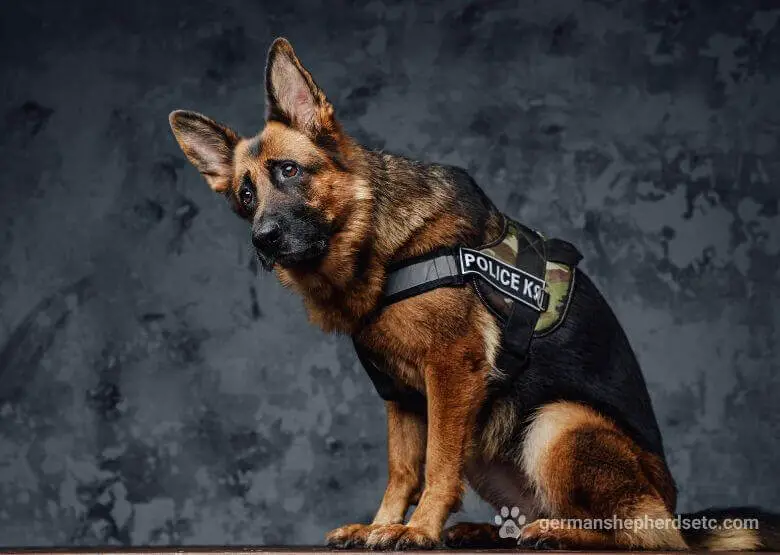
The German Shepherds of the working line differ from their refined exhibition cousins by the more compact and stocky build. The coloration of the animals may be any: black and tan, sable, black, and there are individuals with tricolor.
Strong, hardy, and energetic Shepherds are excellent at any job and are used for service in the police, border patrol, and fire departments. They also take part in various sporting events such as agility championships or relay races.
East German Shepherd Line
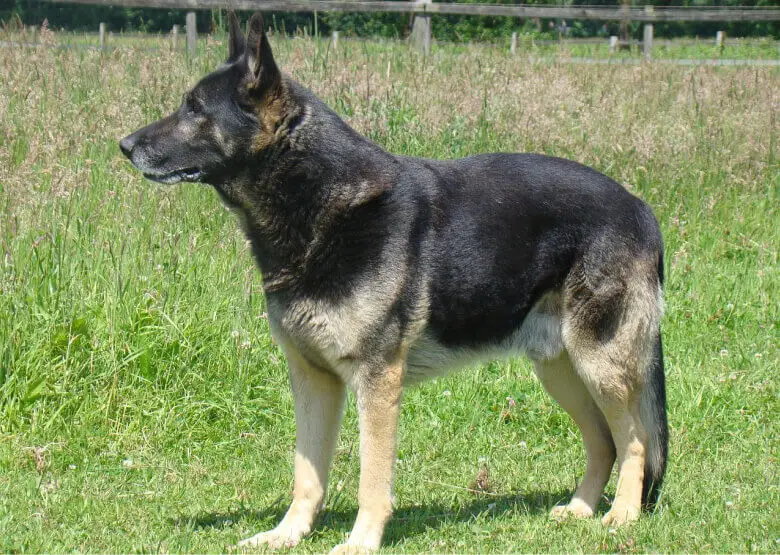
The line was created from the few German Shepherds that remained in the eastern region of Germany after the end of World War II. The dogs of the pre-war period were often rebellious and disobedient, so the breeders aimed to breed dogs with a balanced temperament and obedient nature.
Representatives of the eastern line are heavy-set, sturdy animals with a massive build and large heads. They are well-trained and quick to learn, but at the same time are not lacking independence and are prone to aggression.
American German Shepherd Line
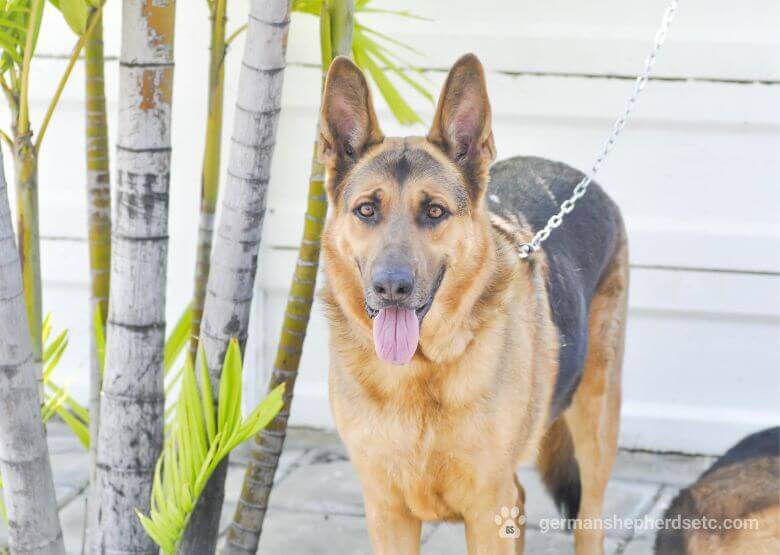
These dogs were bred in the U.S. in the 70s of the XX century by American and Canadian breeders. American GSDs are taller than their German counterparts and have a somewhat angular build.
Breeders tried to get a Shepherd of a family type, adapted to life in large metropolitan areas. Therefore, American German Shepherds have a calm, gentle and affectionate temperament, they are excellent pets, but are not adapted to service work. It has somewhat strange proportions and manners – it runs badly and jumps even worse. American Shepherd gets along excellently in the family, but it is completely lacking the usual working qualities of Shepherd dogs.
Chinese German Shepherd Line
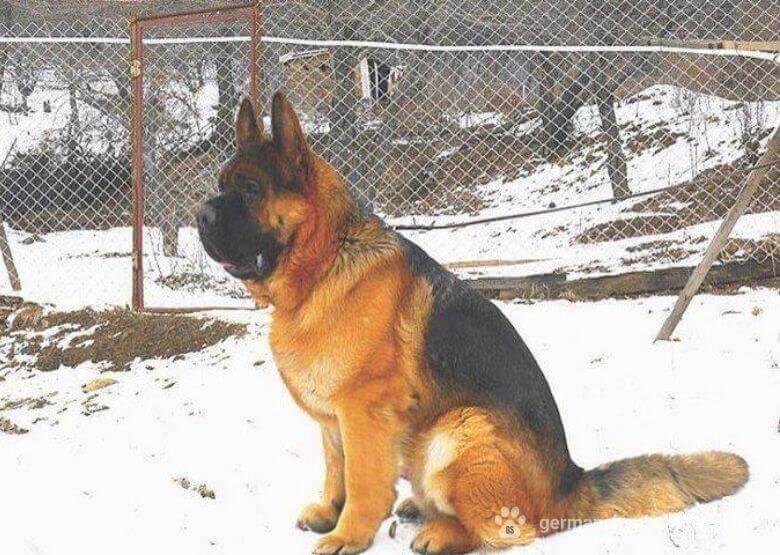
Three dog breeds based on the German Shepherd were bred in China in the 1950s:
- Chinese Shepherd;
- Kunming;
- Chinese Red Mountain Shepherd.
German Shepherds, Beijing Wolfhounds, and local dog breeds of unknown origin were used in the creation of the line.
The Chinese Shepherd is the most interesting of these. It looks like a typical representative of the German breed, the only differences are longer limbs and square body proportions. The dogs have a calm disposition, are easy to train, and are excellent for military and police service.
Czech German Shepherd Line
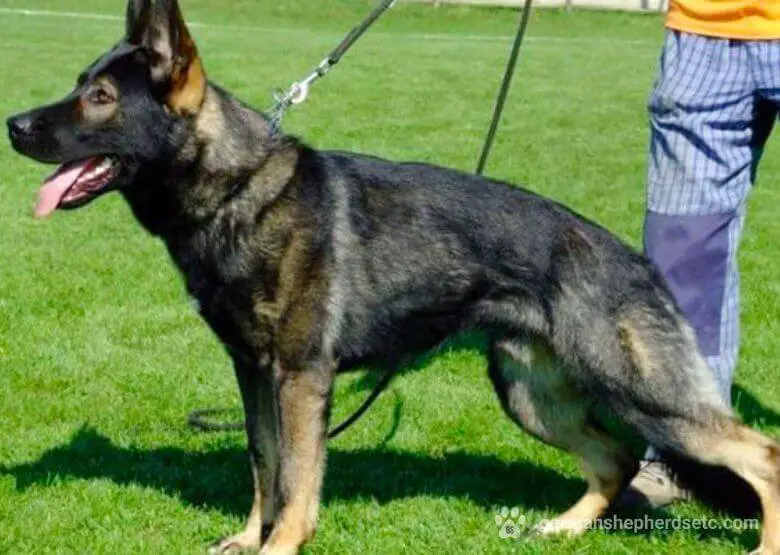
A type of breed based on the East German line. The external characteristics of the dogs are the same as those of the East German Shepherds, they are large, strong, and powerful animals. Regarding the character, individuals of the Czech German Shepherd line are more compliant and calm, they are not characterized by such qualities as hostility and aggression.
Belarusian Shepherds
This breed line was bred in the 1930s in the USSR for guarding and service activities. They were supposed to be used as guard dogs in Siberian camps, so they were crossed with Central Asian Shepherds and Russian Laika for their resistance to the cold climate.
They are powerful and hardy animals, with dark or spotted colors. Some individuals are characterized by blue or bluish-colored eyes.
English German Shepherd Line
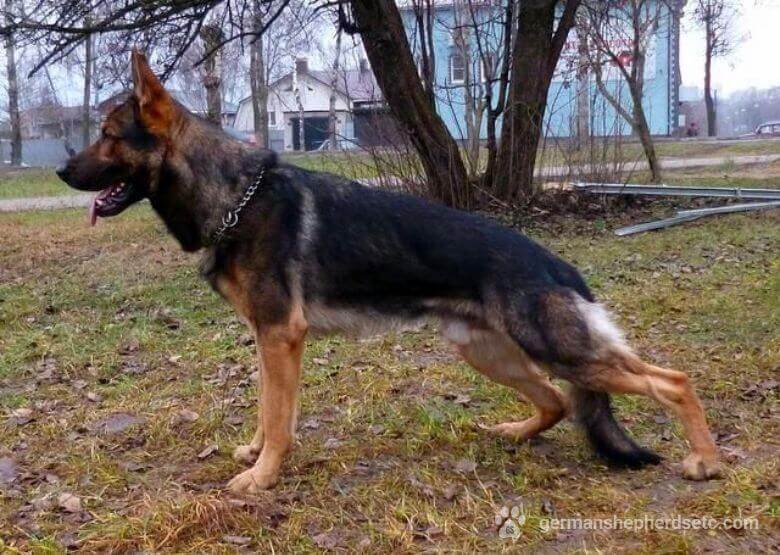
The ancestors of the “English Germans” were the West German Shepherds of the West German line, which came to Great Britain before World War II. The dogs are distinguished from their relatives by their long, stocky bodies and shorter legs.
Obedient, balanced, and hardworking animals were used as police assistants, were involved in military service, and proved to be excellent guides.
Czechoslovakian Wolfdog
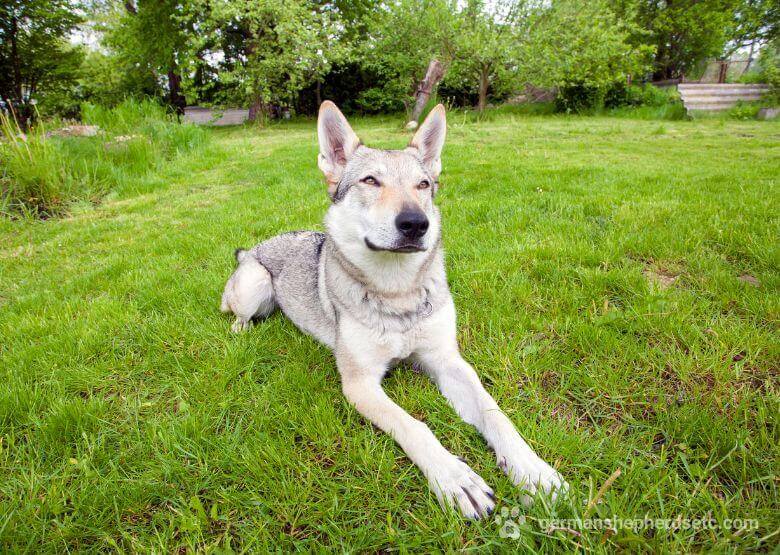
Very interesting and beautiful dogs, which appeared as a result of German Shepherd and wolf crossbreeding. They are lean, muscular, and hardy animals, which have a gray-brown coloration similar to wild European wolves.
Energetic, active, and strong-willed dogs are used for fighting and sports competitions. They are characterized by an independent and willful character, and are not easy to train, so they are not suitable for service activities.
American Shiloh Shepherd
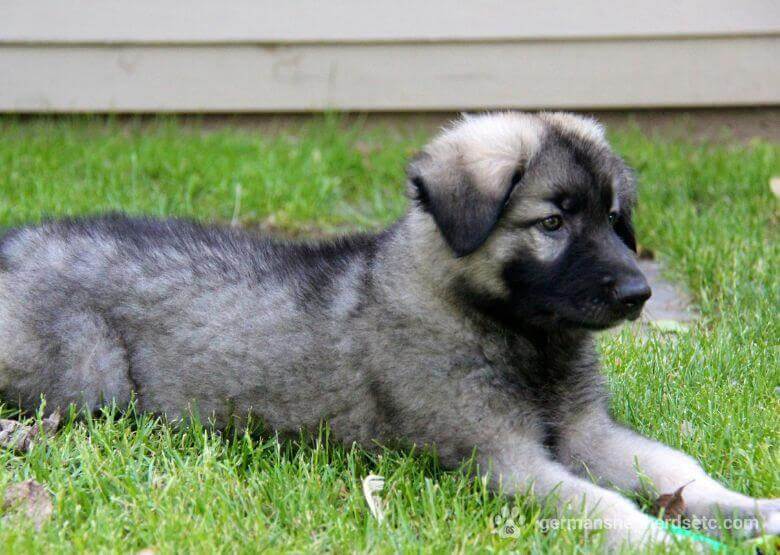
Not recognized by canine experts as a hybrid breed line, although the dogs are quite unusual and original. To breed them, the Americans crossed a representative of the German Shepherd breed, the Alaskan Malamute, and the Macedonian Shepherd. The animals have large stocky bodies and thick, curly hair.
Shiloh Shepherd has an extremely soft, friendly, trusting, and easy-going nature, so they do not make guards or watchmen. But they can be wonderful companions and pets.
Dutch Saarloos Wolfhound

Originated by crossing purebred German Shepherds of East German line and wild European wolves. They combine the external features of both parents and have a thin build and a grayish-brown or completely white color.
Saarloos Wolfhounds have mental toughness and balanced temperament, but they are also characterized by independence and aggression. Not suitable for service work, it is also not recommended to get them as a pet.
The English Utonagan
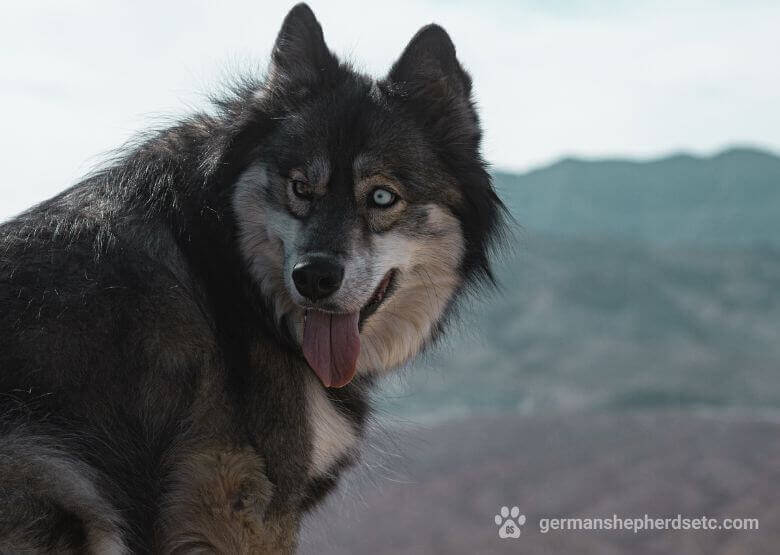
British breeders also wanted to breed a dog with a wolf appearance, but without the inherent hostility of wolves. Breeders have crossed the best representatives of the German Shepherd breed, Malamutes and Siberian Huskies. Dogs have an athletic build and with their gray-silver color, they really look like wolves.
These amazingly beautiful animals have a peaceful and sociable temperament. Utonagans are well-trained, which allows them to engage in various public services.
Long-haired, with black or dazzling white coloration, having a wolf-like appearance or similar to fluffy malamutes.
Shepherds Without German Breeding Lines
Are other types of Shepherds worse? No way! They are no worse and no better, but they are different, although one can often trace both related lines and common temperaments among them.
A large group of Shepherd dogs with or without meaning to accompany herds and flocks was formed. Over time, it has become pretty extensive, and many of them still belong to aboriginal breeds, implying that people did not apply breeding methods to them, and they were formed due to harsh natural selection within their species. Hence, we can observe fantastic endurance, malice, and distrust (bonding with ferocity) towards strangers.
Belgian (Malinois) Shepherd
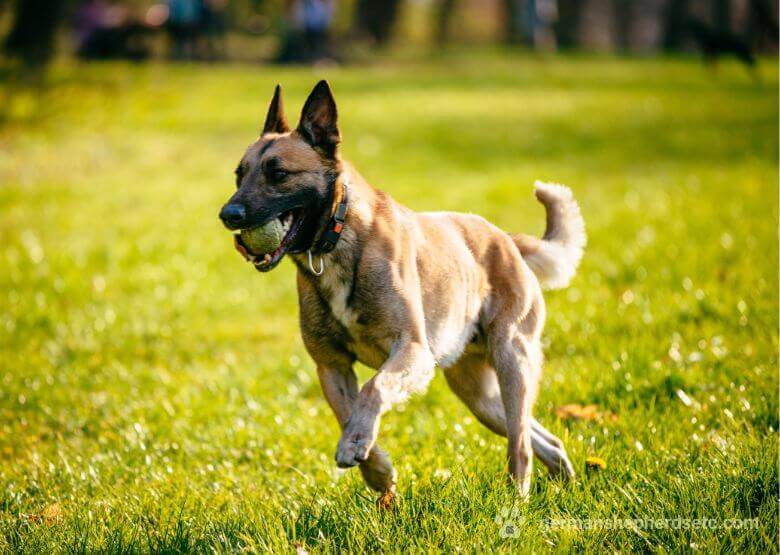
However, when purchasing a Belgian Shepherd, one must take into account that there is no German Shepherd blood in this breed – it’s formed from several types of mastiffs and a Scottish Deerhound. Their compliance with human needs is weak, and the character is as solid and stiff as the Morion stone. For a beginner, such a choice is too tough! It’s actually the dog that does not know what fear is.
Today, these dogs are very popular. They are light, high-legged, with a powerful and simultaneously aristocratic build. The Belgian Shepherd subspecies (Grunendael, Malinois, Tervueren, and Laekenois) won the hearts of breeders and owners with their patient disposition and good trainability. Practically, there is not a single service left where these dogs with a balanced character and a highly mobile body are not used for searching, rescuing, guarding, etc.
Caucasian and Asian Shepherds

The loyal and highly intelligent Caucasian and Asian Shepherds of all varieties are not very suitable for conventional training methods – these methods just do not work for them. A beginner who is just joining the club of dog keepers should not take a dog with such an independent temper, who possesses extremely heroic strength. Keeping these breeds in an apartment, without the conditions for free movement, is cruel to the animals and dangerous for humans.
Danish (Dutch or Herder) Shepherds
Danish Shepherds are also classified as working dogs that do not have German lines in their ancestors but can boast the same strong character as the Belgian ones. Herding and guarding qualities are fantastic here, but… This peculiarly beautiful dog requires long-term socialization since it is difficult for it to get used to the owner, and it is behindhand in sociability from its birth. It is not suitable for a family with young children because it is extremely touchy, and it takes a lot of time for this dog to forgive the offense. When ill-humored, it easily uses its teeth.
Final Thoughts
German Shepherds are very different, but one fact remains unchanged – they are always admired and give only positive emotions.
